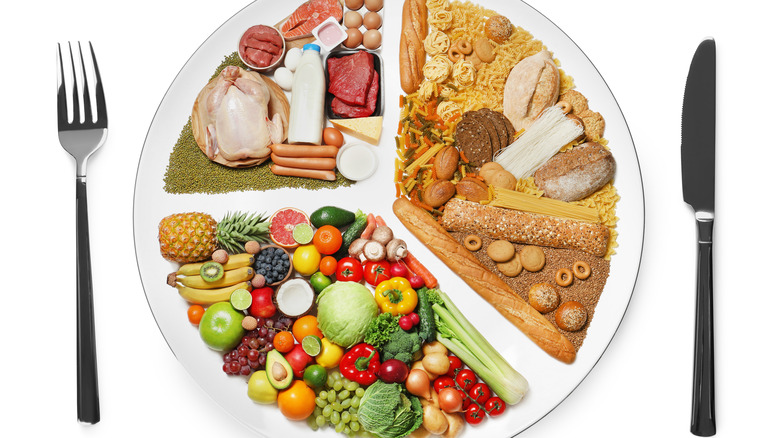Why Don't Experts Use The Food Pyramid Anymore?
Your teachers in grade school probably told you all about it when you learned about nutrition. It was hung in the examination rooms of doctors' offices and was touted as the model of a well-balanced diet. Yet nowadays you don't hear about it much.
The food pyramid was invented in 1992 by the USDA, per HealthyBeat. Surprisingly, it wasn't the first model of food guidelines to be invented. The predecessor to the food pyramid was the food wheel in 1984, although it later became the food pyramid in order to help convey the nutritional guidelines in a simpler manner.
The basic structure of the pyramid is as followed: grains such as bread, cereal, rice, and pasta are at the bottom; the next layer is fruits and vegetables; on top of that are meats; and at the top are sweets, fats, and oils. It is a familiar concept, easy to visualize, and easy to understand. There's no focus on superfoods but rather on everyday foods common to most Americans.
But, according to the USDA, the current food guide is now MyPlate Food Groups, which focuses on what should be on the average American's dinner plate. The five groups are now grains, fruits, vegetables, dairy, and proteins. What exactly happened to the food pyramid? If it was meant to be simple and accurate, why get rid of it?
The food pyramid was incorrect
This may not shock not some, but, as it turned out, the government was incorrect. According to Scientific American, ongoing research from 1992 — the same year the pyramid was introduced — and beyond had proven that the food pyramid in its current model was deeply flawed. There was too much focus on what carbs do to your body, including grains, while it had little focus on certain fats. Of course, this doesn't mean that the food pyramid should have focused less on bread and pasta in favor of fatty foods but rather should have included some of the more "healthier" fats, such as monounsaturated and polyunsaturated fats, in the model.
People assumed that all "low-fat" foods were healthy, unaware that they were no less unhealthy than their high-fat counterparts. But how could the USDA have gotten its model so incorrect? HealthyWay explains that the pyramid was designed to focus on both nutrition and calories. For people to have more calories in their diets, carbohydrates were placed as the foundation of this "nutritional pyramid." The problem was that the model didn't differentiate between what carbs should be consumed and what carbs should be taken in moderation. The food pyramid was made so simple that it cut out key pieces of information in an attempt to streamline the USDA's nutritional guidelines.
Today, the MyPlate model focuses on a more diverse variety of options relating to proteins, grains, and produce in the simple manner the food pyramid did.

